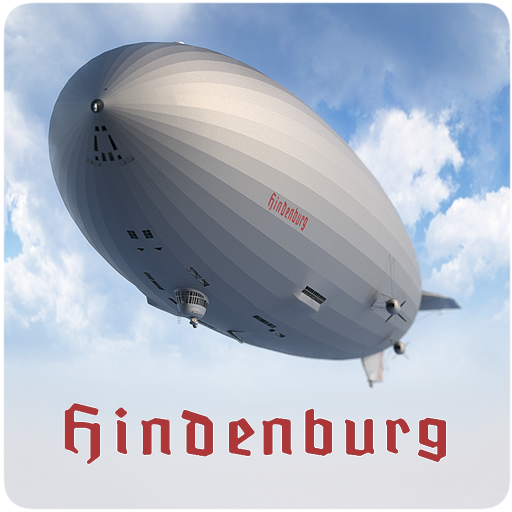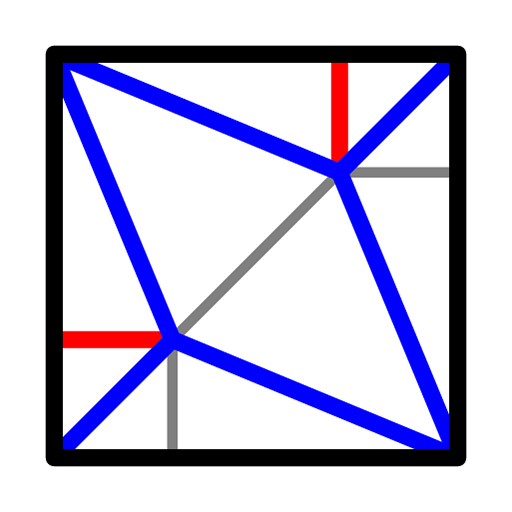

Hindenburg 3DA
Juega en PC con BlueStacks: la plataforma de juegos Android, en la que confían más de 500 millones de jugadores.
Página modificada el: 15 de diciembre de 2014
Play Hindenburg 3DA on PC
Slightly colorized by imagination but still the detailed and genuine 3D reconstruction of largest flying machine ever built.
LZ -129 Hindenburg was a large German commercial passenger-carrying rigid airship. It was designed and built by the Zeppelin Company in Friedrichshafen. The actual construction made of duralumin girders began in the 1931 and after completion, LZ-129 was 804 ft (245m) long, with a diameter of 135 ft (41m) and total gas capacity 7 062 000 ft3 (200 000m3) of hydrogen. The ship was named Hindenburg - after Paul von Hindenburg, President of Germany and until today it remains the largest aircraft ever flown.
The ship’s maiden flight took place on March 4, 1936 with airship pioneer Dr. Hugo Eckener as commander. After period of propaganda flights for Nazi Government, on May 6, 1936 LZ-129 began the service it was originally built for regular transatlantic crossings between Germany and the United States. By the end of 1936, Hindenburg had crossed the Atlantic Ocean 34 times and this successful season seemed to indicate that regular transatlantic air service had arrived. But the first North American flight of the 1937 under the command of Captain Max Pruss turned into disaster. The airship was few hours behind schedule and her landing on Thursday May 6, 1937 in Lakehurst was complicated by thunderstorms. A few minutes after the landing lines were dropped, the first external flames appeared. The fire spread very quickly and consumed the ship in less than a minute. Hindenburg left Frankfurt with 97 souls onboard, 62 survived the crash at Lakehurst, although many suffered injuries. 13 of the 36 passengers, and 22 of the 61 crew including the most senior officer on the board - captain Ernst Lehmann died as a result of the crash, along with one member of the civilian landing party.
The exact cause of the accident has still not been determined, even though the variety of hypotheses appeared. The disaster of the Hindenburg was captured on film, and millions of people around the world saw the dramatic explosion which consumed the ship and its passengers. The spectacular film footage as well as eyewitness radio report shattered public and industry faith in airships and marked the end of the giant passenger-carrying airships for decades.
The interior on the Hindenburg was divided into 3 areas - Passenger Decks (for 50, eventually 72 passengers) contained within the hull of the airship, Crew Areas and Control Car in the ship’s gondola. The modern interior with lightweight aluminum furniture was designed by Fritz August Breuhaus and the walls were decorated by Otto Arpke. Passenger areas were heated. Walls and doors of the cabins were made of a thin layer of lightweight foam covered by fabric and each cabin had running water. During the 1936 season the Lounge contained a duralumin piano. Most surprising, aboard a hydrogen airship but probably the most popular public room on the ship was the Smoking Room. It was kept at higher pressure and was separated from the rest of the ship by an airlock. Crew areas on Hindenburg were primarily located along the keel together with tanks and cargo storage areas. The keel also offered access to Engine Cars and the Auxiliary Control Station.
Hindenburg was navigated and conned from Control Car, located toward the bow of the airship and divided into 3 sections a control room at the front, a navigation room at the center, and an observation room at the back. Hindenburg had a normal cruising altitude of 650 ft (200m), but sometimes was flown as low as 330 ft (100m) when necessary to stay below the clouds. The weather was one of the most important factors in zeppelin operations and officers spent a lot of time preparing and consulting the weather maps.
Maximum speed of LZ-129 was 135 kmh (84 MPH) but most of the time the 4 Daimler-Benz engines were operated at a cruise setting of 1350 RPM giving the ship the airspeed about 125 kmh (76 MPH).
Juega Hindenburg 3DA en la PC. Es fácil comenzar.
-
Descargue e instale BlueStacks en su PC
-
Complete el inicio de sesión de Google para acceder a Play Store, o hágalo más tarde
-
Busque Hindenburg 3DA en la barra de búsqueda en la esquina superior derecha
-
Haga clic para instalar Hindenburg 3DA desde los resultados de búsqueda
-
Complete el inicio de sesión de Google (si omitió el paso 2) para instalar Hindenburg 3DA
-
Haz clic en el ícono Hindenburg 3DA en la pantalla de inicio para comenzar a jugar




